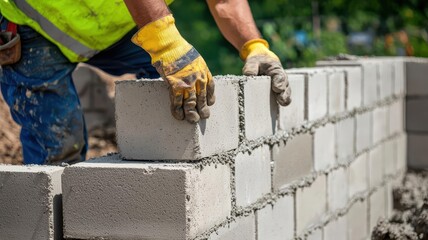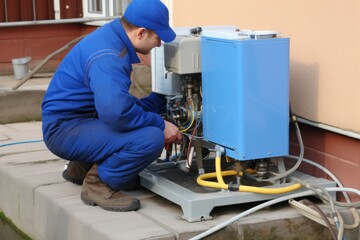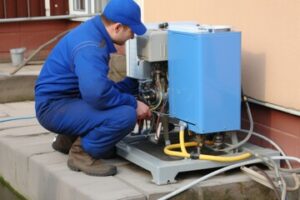Pokemon 151 Canada is one of the most popular gaming franchises out there. Each new game in the series adds a little something to the mix and keeps fans coming back.

The newest games, Pokemon X and Y, brought Pokemon to 3D on the Nintendo 3DS and gave trainers a closer look at their pocket monsters. The XY games also added the Pokemon-Amie system, which let trainers bond with their companions.
Pokemon gameplay involves catching and training fictional creatures known as Pokemon and using them to battle other Pokemon. Each game in the franchise introduces new Pokemon, items, and gameplay concepts. The games feature a story that unfolds as the player progresses, and there are also many ways in which the players can customize their play experience. They can try to capture all the available Pokemon, for instance.
Pokemon games are incredibly addictive, and there are a number of things that can help keep the game fun and enjoyable, even when the gameplay gets a little repetitive. Players can try to find all the shiny Pokemon, for example, or they can set themselves challenging goals such as beating the game with only one Pokemon. They can also make their play experience more unique by providing a link between each of the Pokemon in their team. This can be anything from the Pokemon’s type, to a letter in their name, or some other creative link.
During the battle, the player uses the Pokemon’s moves to attack its opponent. Each move has a different damage value, and the game uses RNG to determine whether a Pokémon will hit or miss. There are also several other elements that can affect a fight, such as a Pokémon’s type-weaknesses, its ability to inflict status conditions, and the effect of critical hits. The game also has a system whereby the player’s Pokemon’s happiness level can affect its ability to learn moves and evolve.
Some players like to customize the gameplay by altering the original ROMs, known as hacks. ROM hacks offer a wide variety of changes, from enhanced storylines to improved battle mechanics. Some of these hacks also include a higher difficulty level for players who want to test their skills. In addition, these hacks sometimes include in-game events that were never included in the original game. For instance, some hacks introduce a dungeon called the Tower of Secrets, which offers a new plot and challenges for the player to overcome. In some cases, these hacks can be downloaded for free from the internet.
Rules
Pokemon is a complex card game, and its rules can be difficult to understand. For new players, the best way to learn is to play it. In addition, the app provides built-in tutorials and references, making it easy for players to get started. Unlike other strategy games, Pokemon requires players to be flexible and adapt quickly. A simple coin flip or misread can completely change the outlook of a turn. The best way to prepare for this is to practice in the game’s built-in battles.
To play the game, both players need a deck of 60 Pokemon cards and a space to place them on the table. Then, each player draws seven cards to form their starting hand. They also need damage counters, which can be represented by coins or tokens, and a way to determine who goes first, such as flipping a coin.
Each Pokemon has its own unique characteristics, and it’s important to read the text on each card. These include its evolution stage (Basic, Stage 1 or Stage 2), its hit points or HP, and its weaknesses, resistance and retreat cost. These features will help players plan attacks and build better decks. In addition, some cards may have effects that apply to the player as well as the opponent. These are known as Pokemon effects, and they can be very confusing to new players.
The game continues until all of one player’s Pokemon are knocked out or the player runs out of cards to draw. Then, that player wins the game by collecting all of their prize cards.
During your turn, you may attack or play supporter cards, but you can’t put a Pokemon on your bench. You can also play any number of energy cards from your hand to your bench. You can also attach a single item card to your active Pokemon, but you must do so before your attack.
The Pokemon Trading Card Game rules can be complex, but they are a lot of fun to play. There are also many different ways to combine the Pokemon, trainer and supporter cards to create powerful decks. The rules of the game can be changed and updated from time to time, so it’s important to keep up with these changes. The most comprehensive list of rulings for the Pokemon Trading Card Game is available in a resource called the Compendium. The Compendium is used by judges at tournaments and by players to determine how to play the game correctly.
Trading
Trading is an important part of Pokemon gameplay, and it’s the way you get most new Pokémon. It can be done both online and in person. In the latter case, make sure you trade in a safe location where there is lots of foot traffic to deter scams. Also, always bring a friend or family member along to trade with you — their presence will also act as a deterrent against dishonest behavior.
In Generation III and IV core series games, trading was done through the Global Trade System (GTS). This system allowed players to deposit their own Pokemon in exchange for other Pokemon at any time. The original player would then receive the traded Pokemon upon logging in to their Game Boy Advance, Nintendo DS or Switch game. This process was largely replaced by the Poke Portal in Generation V, which was made possible by the Nintendo Wi-Fi Connection. This allows Pokemon to be transferred between multiple games and platforms in a way that was not possible before.
To trade, both players must have a compatible game and a link code. To get a link code, players must first visit a Pokemon Center and speak with the receptionist. This will give them an eight-digit code that must be entered into both games in order to trade. To start a trade, the player must select either Link Trade or Surprise Trade in the Poke Portal. Link Trade allows players to pair up and trade directly with one another, while Surprise Trade gives them a random Pokemon from the GTS.
The trade cost is based on the Pokemon type and the player’s Friendship level. The higher the friendship level, the lower the trade cost. Once a Pokemon is traded, its HP and CP will change but other aspects, such as size, movesets and evolutions, remain the same.
In Generation VII and beyond, if a Pokemon has an unnicknamed evolved form, the game will name it according to its language of origin. This means that a French Bulbasaur with an unnicknamed Ivysaur will evolve into a Herbizarre in an English-language game, for example.
Collecting
Collecting Pokemon cards is an exciting hobby that can help young players learn about the value of hard work and dedication. However, it is important for parents to set limits on how much time and money they are willing to spend on the game. They should also ensure their children understand the dangers of meeting strangers, as the app encourages players to walk around their neighborhood or city.
In addition to gaining a valuable skill, card collecting can be a fun way to stay connected with other Pokemon fans and share interests. It can also help students build social skills and learn about different cultures. It is also a great way to promote healthy living and develop a love for nature.
Pokemon collectibles can include anything from toys and plushies to video games, TV shows, books, and trading cards. The series, which has been a cultural phenomenon for more than 20 years, has expanded to include multiple games and hundreds of characters. Its popularity has spawned many products that appeal to the collector mindset, including rare variants and alternate art chase cards.
There are several different ways to organize a collection, depending on the goals of the collector. Some choose to group cards by set, while others prefer to sort them according to their rarity or type. Regardless of the method used, it is important to have a plan for the collection and keep a record of progress. This will help ensure that the collector is on track to reach their goal and keep the hobby enjoyable.
The Pokemon TCG Pocket app offers a unique way to collect digital trading cards. The free-to-start app allows players to open virtual booster packs and trade with other players. The app is available on iOS and Android devices. In addition to a digital version of the card collection, the app features an online trading board and a 3D scanner. The app also allows users to complete Guide missions and purchase item cards, which are valuable for building decks.
While the Pokémon TCG is not as complex as Magic, it still attracts a dedicated fan base. The company continues to release new sets and reprints of older sets, so it remains a popular choice for collectors.




